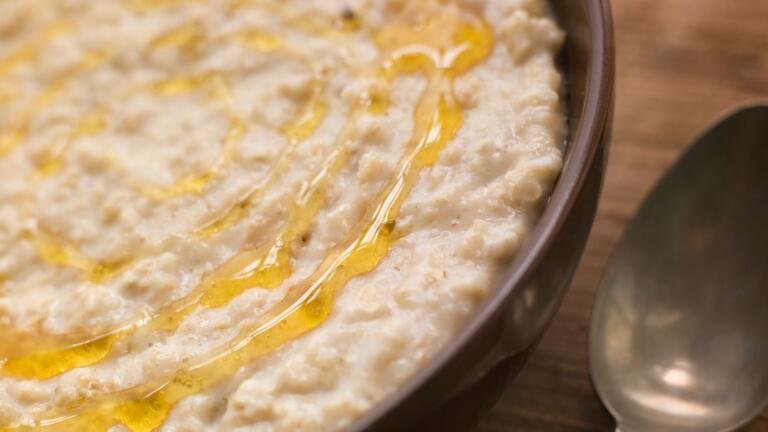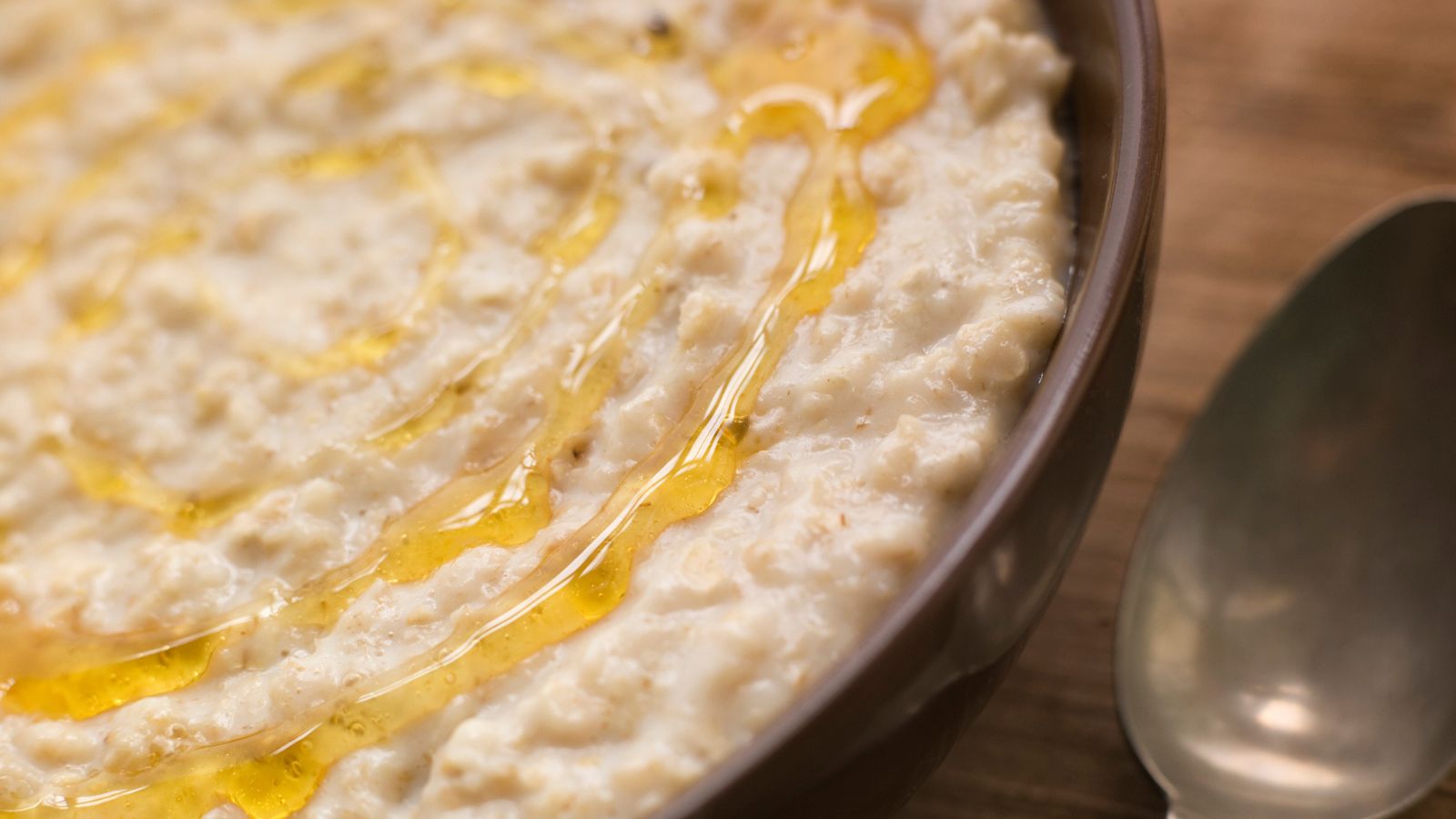My father was a short-order cook, a strictly stovetop kind of guy. Israeli salads and scrambled eggs. I never saw him approach the lower half of the oven, except to clean it within an inch of its life. It would take me until my 30s to realize that he did not grow up with anything like the ovens we had in Canada, and that there wasn’t much in his childhood home to place in a stove.
He was born in Mandatory Palestine in 1936 to Yemenite parents, who themselves were born in Ottoman Palestine. All four of his grandparents left Yemen in 1881 in what was known as the First Yishuv.
For my father, an oven was a primus — a portable camping stove that uses kerosene or paraffin oil. As a 12-year-old boy during the 1948 War of Independence, he ate grass and weeds (mostly mallow, known as kubezeh) that he had to forage for himself. So, on balance, his short-order cooking made sense.
When I grew up and moved to Israel and other new immigrants asked me about my background, my father’s lack of culinary skills became a source of repeated disappointment.
The Nosher celebrates the traditions and recipes that have brought Jews together for centuries. Donate today to keep The Nosher's stories and recipes accessible to all.
You must have had tons of jachnun and zhug?
More like zero.
I thought you said he was Yemenite.
My father did put an awful lot of Mexican salsa on everything from spaghetti to chicken, and ate onions like apples for breakfast, but Jewish food for me was Ashkenazi all the way. Well, you can’t go back.
Recently, I introduced a new dialogue project with my EFL (English as a Foreign Language) college students (anything to get them talking). Each student had to film herself discussing her favorite family recipe. I teach in Jerusalem and my students come from a range of backgrounds that include Morocco, Algeria, Syria, Ethiopia, Russia and France.
Occasionally I have a student with a Yemenite background. This particular student, we’ll call her Shira, introduced her recipe by stressing how often she eats it at home, and how delicious and nutritious it was, particularly for keeping on weight. This made sense as Yemen was (and still is) a very poor country, and many of their recipes are inexpensive and calorie dense, something important in an undernourished population.
Then, to my amazement, Shira described my father’s “hot cereal” recipe, as I had always called it. It’s more widely known as harish. He used to mention that his mother made it for him year-round, including on Passover, but I took that to mean it was a family recipe, not a Yemenite Jewish one.
My father made this for me on the rare winter mornings when he was not off to work before I woke up. I remember the satisfied look on his face as he stirred and stirred groats, tossing out tidbits about his mother and his life in pre-state Israel like rare coins while he watched butter melt into the milk. He wasn’t much of a talker when it came to his past, but perhaps the familiar smell loosened his tongue.
For a few minutes, I would be drawn into his world of a mother who sold her own saluf (Yemenite flatbread) and zhug to passersby for extra money and chatted in both Arabic and Yiddish, rather than my usual stance, which was “Why can’t he be like all of the other fathers in my Jewish school and pull out the AlphaBits and Fruit Loops?” Nowadays, this recipe is a family favorite, particularly on Passover and if we are having sleepover guests on Shabbat.
I remember Shira’s surprise when I told her I was familiar with this recipe and thanked her for choosing it as her assignment. Turns out my birthright wasn’t entirely lost to me, it just took me longer than most to realize it. Better late than never.
Notes:
This recipe is endlessly adaptable:
- My kids prefer it with half a cup less water and half a cup more milk. Some people omit the milk, just as they would for oatmeal.
- I’ve seen recipes that add a teaspoon of sugar and margarine instead of butter, though I’ve never tried it.
- On Passover, we substitute crushed matzah for groats or wheat.
- On Shabbat, we bake this mix in a jachnun pot on a low heat (225°F or 100°C) overnight in the oven for cold Saturday mornings, which yields a very soft mixture.

Harish
This Yemenite Jewish “hot cereal” (porridge) is a bowl of nostalgia, with a satisfying, creamy texture. It’s the ultimate comfort food of generations past.
- Total Time: 35 minutes
- Yield: Serves 4-6
Ingredients
- 6 cups water
- ⅓ cup milk
- 2 cups wheat groats or crushed wheat
- ½ tsp salt
- ½ cup (8 Tbsp) butter
- honey, to taste
Instructions
- Combine the water, milk, groats or crushed wheat and salt in a pot. Simmer for 30 minutes, stirring often.
- Heat the butter in a pan.
- Place the harish (porridge) mixture in the pan, spoon out a hole in the middle and fill with honey (to taste). Serve hot.
Notes
- My kids prefer it with half a cup less water and half a cup more milk. Some people omit the milk, just as they would for oatmeal.
- I’ve seen recipes that add a teaspoon of sugar and margarine instead of butter, though I’ve never tried it.
- On Passover, we substitute crushed matzah for groats or wheat.
- On Shabbat, we bake this mix in a jachnun pot on a low heat (225°F or 100°C) overnight in the oven for cold Saturday mornings, which yields a very soft mixture.
- Prep Time: 5 minutes
- Cook Time: 30 minutes
- Category: Breakfast
- Method: One-pot
- Cuisine: Mizrahi




Are you referring to oat groats or buckwheat groats or maybe something else?
Wheat groats, aka bulgur.
Could i use a crockpot?
You could try this for the overnight version, sure!
When you say groats, I think of buckwheat groats (kasha). Crushed wheat? Is that bulgur? I am not sure which grain you mean here.
These are wheat groats aka bulgur. Enjoy!
What are groats or crushed wheat? I live in Isfrael, is there a brand of these you prefer?
I am used to buying the Sugat brand in Israel.
How finely crushed should the groats be?
My family enjoys the consistency of oatmeal.